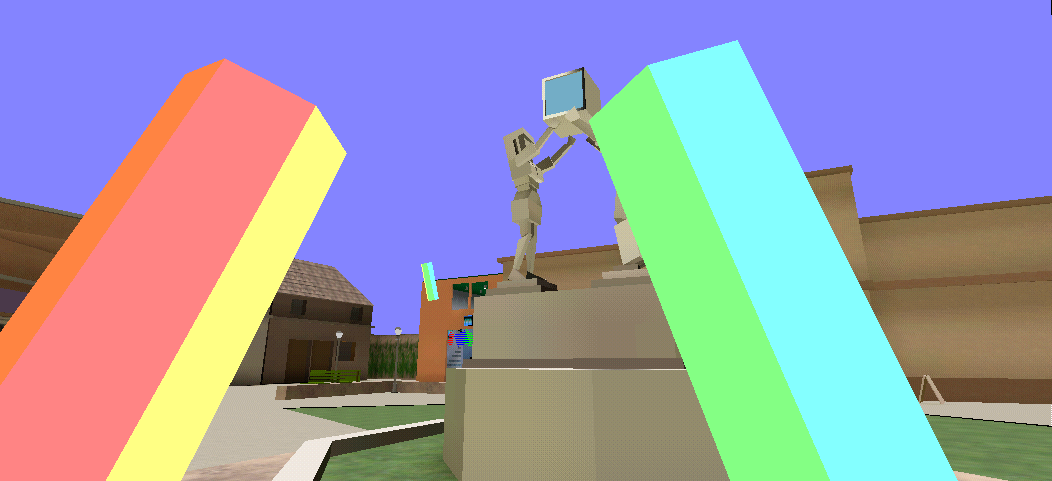The vintage avatar for a virtual reality classic.

The year is 2002. Many still access the Internet over the telephone line, and some still speak of “Usenet” and “Netscape”. The Internet isn’t ready for a virtual reality paradigm shift – others have already tried – but that isn’t stopping Adobe from trying too. After all, “reality is overrated”.
Atmosphere never really took off the way Adobe wanted it to. The company must’ve gotten more fans than customers for their oddball product. But just how was a graphics software company supposed to turn the 3D equivalent of IRC into a popular, high-fidelity medium for online retailers? Second Life wouldn’t open its doors to the public for another year. AOL’s subscriber base still numbered over a thousand. And most websites seemed design-challenged at two dimensions, let alone three.
“Dialup” is a colorful reminder of the days when lofty visions for the World Wide Web gave rise to techologies that really were too far ahead of their time. It imitates the placeholder avatar in beta versions of Atmosphere (up to Build 67). In Atmosphere parlance, an avatar is a “body” of sorts that you wear while exploring and chatting in worlds. Others appeared to wear a tall, tie-dyed cylinder while your computer furiously downloaded their real avatars at the blazing speed of 56.6 kilobits per second.
The placeholder avatar really doesn’t do Atmosphere justice: the software’s graphics and animation capabilities were top-notch by the time version 1.0 was released (without the cylinders). But new users who stopped by HomeWorld – only to face dozens of freshly-painted poles sliding towards them to say hello – were to say the least put off. Many never returned. Somehow, a simple geometric shape proved more intimidating than the gruesome avatars that cropped up every Halloween.
Don the avatar that scared the newbies away.
To wear Dialup, first visit an Adobe Atmosphere world, such as MingerWorld. Follow the directions there to install the free Atmosphere plugin, if you haven’t already done so. Then type or paste the following line (all one line) into Atmosphere’s command line:
/avatar http://www.1ec5.org/3d/avatars/dialup/dialup.aer
To see what you look like, enable the View My Avatar option on the Atmosphere toolbar. If that’s not old-school enough for you, try opening the same world in another browser window or tab. Dialup should now be visible in each copy of Atmosphere. (This trick only works if you’re in a world with chat enabled, such as MingerWorld.)
A couple caveats: the original avatar made the sound of a “bug zapper” every time you entered a new world – for instance, by stepping into a portal. Unfortunately, Dialup only makes that sound when you first wear the avatar on (or launch Atmosphere) and when another user wearing Dialup enters the world. Also, the dimensions of the cylinder itself are just a rough estimate. If anyone knows the original avatar’s true dimensions, please let me know.
Download it for posterity.
Dialup is designed to be used online while exploring an Adobe Atmosphere world. However, you may download the individual, 1.8 kB world file or an 88 kB archive that includes everything needed to make the avatar function correctly. In addition to the authentic bug zapper sound – copied straight out of the Build 67 program folder – a crude, public-domain imitation is also included, in case you want to steer clear of any copyright issues. (If you use it, you’ll need to modify dialup.js to refer to the right sound file.)
Please take the time to keep a copy of this avatar for yourself. Little pieces of Internet history, like Atmosphere’s placeholder avatar, keep great ideas from fading.
Original content copyright © 2008–2009 Minh Nguyen. Some rights reserved. “Bug zapper” sound effect copyrighted by Adobe Systems.
